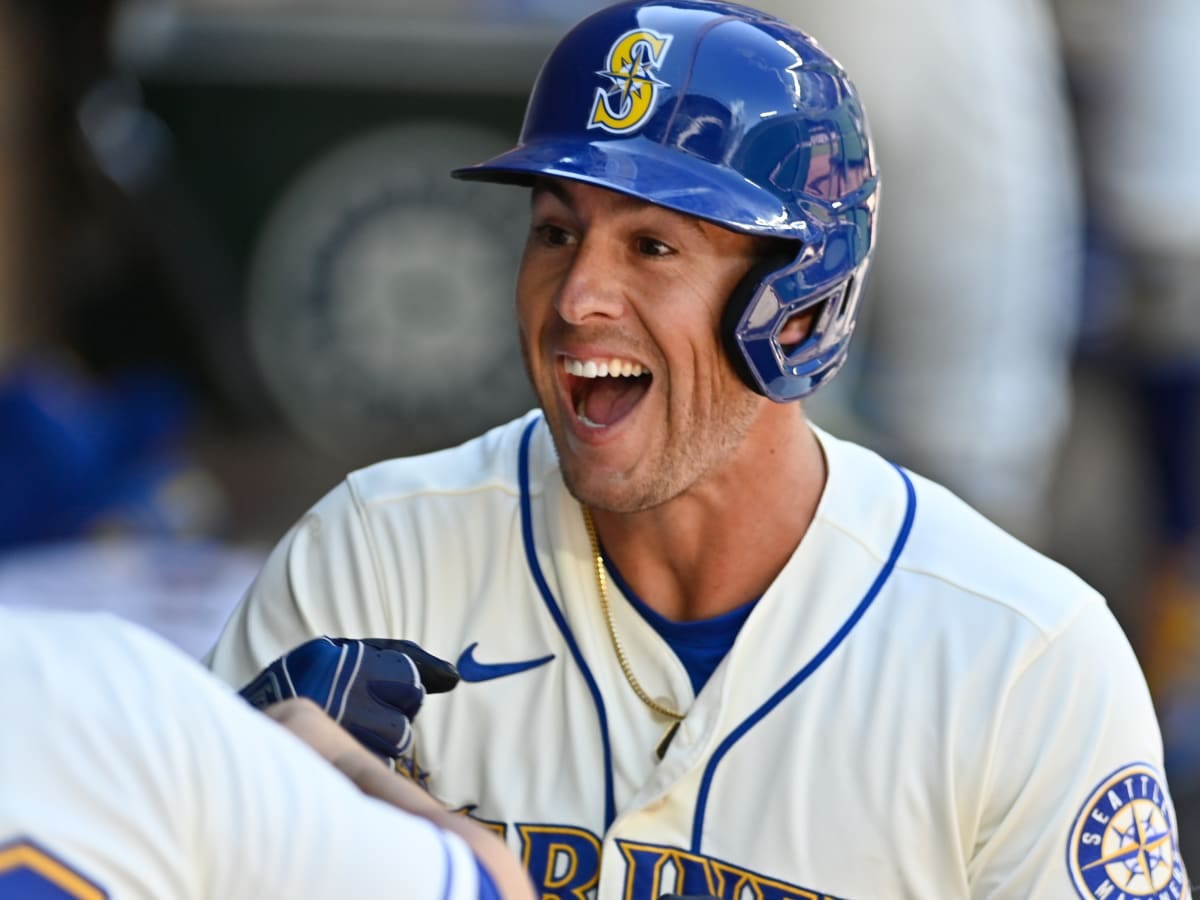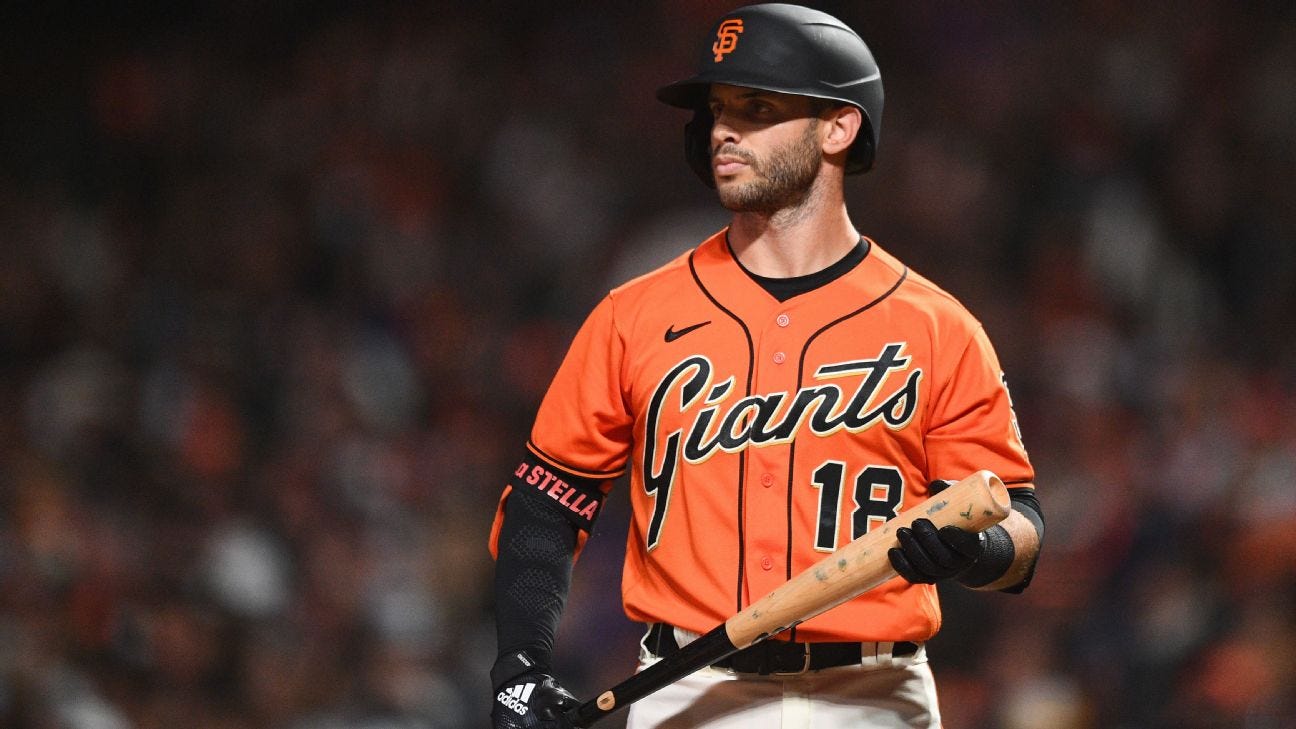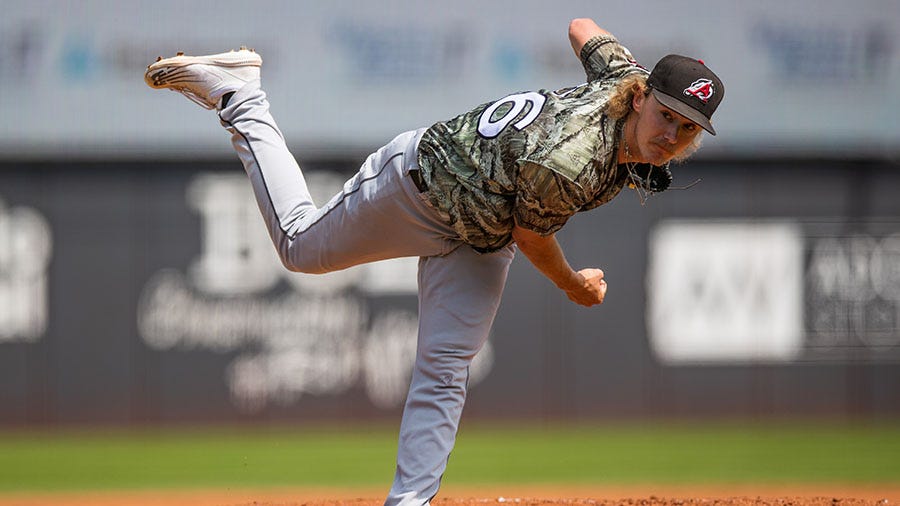Utilization seems key to Mariners' depth in 2023
The Mariners may not have added significant upgrades to their roster this winter, but how the players are used may make quite a difference.
A year ago, Mitch Haniger and Tom Murphy got hurt early and missed a ton of time, forcing the Seattle Mariners to dig into their depth. It didn’t work out very well.
Murphy played 14 games and was done for the year, pushing Luis Torrens into more regular action, which eventually forced the club to grab Curt Casali via trade because Torrens forgot how to find the barrel and was already a fringe defender.
Haniger ended up returning from COVID and hurting his ankle in his first game, and wouldn’t get back to active status until August. He ended up playing a total of 57 games — 48 post-IL stint — which meant the club’s most dangerous hitter (at the time) was gone for most of the season.
These two absences alone exposed the club’s lack of depth. And when I say ‘depth’ I don’t mean prospects, necessarily. I mean players capable of handling the load of PAs to keep the team afloat, like when the Atlanta Braves inserted Vaughn Grissom and Orlando Arcia more regularly into the mix when injuries bit them in 2022. Grissom, technically, was a prospect, Arcia was not. Both filled in nicely.
Get 15% Off an Annual Subscription to Baseball Things until February 16 only!
The Mariners, who also lost Kyle Lewis to injury last season, were short, hence the deal for Carlos Santana in June, and the extended time accrued in the majors by Taylor Trammel, with additional appearances by Justin Upton, Marcus Wilson, Kevin Padlo, Donovan Walton, Mike Ford, Steven Souza Jr., Drew Ellis, Travis Jankowski, Jack Larsen, Brian O’Keefe, Stuart Fairchild, Andrew Knapp, and the trade for Jake Lamb and his 34 PAs.
The above group tallied 298 plate appearances in 2022 and batted .171/.240/.291 with six homers and a 37% strikeout rate. While a few of those PAs are unavoidable, the reason they occured was twofold. One, a lack of quality depth, and two, the depth the club counted — mainly Torrens and Abraham Toro — didn’t perform.
As a result, the fringe PAs totaled 298 rather than, say, 100 or fewer. But also as a result of injury (and to an extent the lack of production from Jarred Kelenic), Dylan Moore was asked to be something he’s not — a viable option narly three days a week, including far more time versus right-handed pitching than the club would have liked.
Luke Arkins on why Ty France deserves the benefit of the doubt
It appears, however, the 2023 roster — at least as it sits today — is better equipped and better set up to avoid some of the pitfalls of 2022.
Beyond the chance Kolten Wong is better than Adam Frazier (good chance), Tommy La Stella’s presence suggests Moore won’t be forced into action with regularity at second base or shortstop, especially against right-handed pitching where he owns a career 92 wRC+. He was fine in 2022 vs righties, but that was largely dependent on a walk rate over 11%. He batted .204 with a .304 slugging and 29% K rate against them.
A heavier lean toward facing lefties (137 wRC+ in 2022, 112 career) without overexposure helps max out the value of Moore. The roster is also built to help Moore avoid playing outfield with any regularity. He’s playable in the corners, but he actually excels defensively at second and is average or so at shortstop, and if he’s kept up the middle where he’s more natural, his overall value goes up, but it also may help his development at the plate.
The Mariners asked Jarred Kelenic to be an everyday player last year, and while the big picture remains such for the 23-year-old, having a backup plan not conceived entirely of the next prospect up (Taylor Trammell, Cade Marlowe) was key for the club’s progress in 2023. Signing AJ Pollock will help, but perhaps Sam Haggerty’s abilites versus left-handed pitching continue to provide value for the Mariners.
Last season in an admittedly small sample of 66 PAs, Haggerty mashed lefties to the tune of a .364/.449/.652 clip (211 wRC+), but the basic fact he handled southpaws isn’t just small-sample magic — not that such a triple-slash is remotely repeated for the utility player.
His swing and zone coverage are solid-average as a right-handed hitter, though there’s no reason to believe he can’t be a legitimate switch-hitting reserve.
The Mariners signed Colin Moran to a minor league deal and his presence could allow Eugenio Suarez and/or Ty France to take more regular breaks, primarily versus right-handed pitching. La Stella and his career 105 wRC+ vs righties also could provide assistance here.
Moran, like La Stella, didn’t hit much in 2022, and Moran is a 40-grade defender at third and reverse splits at the plate, but he carries a career .273/.338/.431 slash (104 wRC+) versus righties into the season.
Even Moran’s 86 wRC+ a year ago — the worst of his career — was better than what Toro (62) or Torrens (72) put together, and the same goes for La Stella’s 78.
Perhaps the biggest development of 2022 outside Julio Rodriguez’s rookie season is Cal Raleigh’s ascent to impact. This, too, has an effect on how the Mariners have built and can utilize their entire roster, including the bench. Murphy can now be used mostly versus lefties where he owns a career .259/.351/.486 slash and 124 wRC+, which complements Raleigh’s relative weakness — and I qualify this because a 112 wRC+ versus lefties is no kind of true weak link for the Mariners’ starting catcher, and I think Raleigh’s upside as a right-handed batter is higher than most right-handed hitting backstops in the baseball.
Another potential benchie for Seattle in 2023 is Cooper Hummel, acquired in the trade with Arizona for Kyle Lewis. Hummel offers the club a potential No. 3 catcher on the roster, but is adept in the corner-outfield spots and has hit right-handers well through the upper minors.
The 2023 roster appears far more complementary than a year ago, and far btter equipped to ‘manage’ if one or more are thrust into more duty than is otherwise ideal. The group of La Stella, Moran, Hummel, Haggerty, Moore, Murphy, is better than the depth from a year ago, led by a markedly more trustworthy floor.
The trickle down led by 2023 Teoscar Hernandez’s advantage over 2022 Mitch Haniger is astounding, and sets up the club to handle typical injury expectations with better answers.
Dylan Moore
In addition to being asked to fill a role better suited to his skills, Moore could impact both middle infield spots offensively. A year ago, Adam Frazier didn’t hit a lot, but he especially scuffled versus southpaws (.210/.286/.290, 73 wRC+). Moore, ideally would have played second base a lot for Frazier versus left-handed pitching, but because the outfield needed so much help he made just eight starts at second all season, logging but 64 innings there. He made 17 starts at shortstops, a chunk due to J.P. Crawford’s suspension.
Moore’s 36 starts and 64 apearances in the outfield are likely to be greatly reduced in 2023, allowing for his strengths to fill some gaps in the performances of Wong and Crawford, both left-handed batters who perform better versus right-handed arms.
Bulk
In addition to raising the floor with veterans over unproven players, the Mariners have added some opportunity with bulk — more depth. It’s plausible the club starts 2023 with Moran and Hummel in the minors. A year ago, this was Trammel, Ford, Souza Jr., and Padlo.
Trammel and Marlowe remain in line, and they too are better set up for success if called upon in short stints. No longer are they the next man up, but if they ‘earn’ the chance and perform, they can stick in some capacity. But they’re only going to get extended chances if they hit. The Mariners clearly are planning to go to La Stella, Pollock, and Moran first before digging deeper into the system.
Trammel and Marlowe should not be slept on, though.
The Kids
Trammell’s 2022 season was uneven in the majors, but he raked for 22 games in Tacoma (.333/.408/.575, 17% K, 11% BB, 144 wRC+), and posted a 99 wRC+ in 117 PAs in the majors. He ended his season in a 1-for-31 slump, but slashed .268/.361/.521 in 84 PAs prior to that, and showed flashes of figuring out some things.
Sample size notwithstanding, Trammell handled fastballs last season (.255 AVG, .608 SLG, .411 xxOBA) in 63 PAs that ended on fastballs, and despite a .167 average and 41% whiff rate on breaking balls, did improve in this area by about 10%. In 2021, Trammell batted just .183 with a .296 slugging vs fastballs.
Marlowe has yet to make his debut, but he did get promoted to Triple-A at the endo of last season. He can run, handle center about as well as Trammell (albeit with a better arm), and offers Seattle an additional outfielder with CF capabilities in case of emergency.
Marlowe and Trammell are likely to share the outfield in Triple-A Tacoma. Both are 25, both lefty bats, and each come with very similar profiles. Additionally, both need to make more contact and clean up their handling of secondary offerings.
The DH Spot
If the season started tomorrow, the Mariner’ DH would be a go-round of the three outfielders (Rodriguez, Kelenic, Hernandez), with AJ Pollock and Tommy La Stella rotating in for matchup plays. Of course, the occasional appearance in the DH role from Suarez, Raleigh, and France exists, too, but mainly it’s going to be Pollock and La Stella.
It’s not exactly a great combo that’s going to strike fear into opposing pitchers, and Pollock being used a lot at DH means Kelenic s exposed versus what could be too many left-handed pitchers. The club is short at least one bat, unless they’d like to platoon two positions on the field. Haggerty, theoretically, could start in left for Kelenic against most lefties when Pollock starts at DH.
But what if the club starts the season with Hummel on the roster and Haggerty in Tacoma? Hummel is a lefty stick, so he doesn’t directly assist the matchup issue here, but as a catcher option may lend a bit more confidence to Scott Servais if he wants to give Raleigh some DH time. If this us utilized against southpaws, Pollock is available to stand in for Kelenic in left.
But this magnifies the point: The Mariners are markedly better set up for success this season than last, based on projected health and the deployment scheme of the hitters they have.
It’s not a juggernaut lineup, and the Mariners are indeed hoping a bit on some things (Wong to sustain, Kelenic to develop, Pollock to avoid fading at 35, more from Rodriguez, Raleigh, and Crawford, Suarez to avoid a steep dive), but they have rasied the floor and to a lesser extent the ceiling of the offense for 2023.
Bryan Reynolds
While Reynolds is a terrific fit for Seattle, among other clubs, one sticking point between the two clubs could be right-hander Bryce Miller.
Miller is the club’s top pitching prospect, and is close to big-league ready. I’ve made the point for over a year the Pittsburgh Pirates are almost certainly to seek a trade package that includes, if not headlined by, young starting pitching. Since Logan Gilbert and George Kirby aren’t going anywhere, Miller is the next possibility.
The Trade Cost for Bryan Reynolds
In a vacuum, Reynolds is worth Miller, Harry Ford, and any other prospect in the system. But Seattle, a contender in 2023, is likely to call upon Miller, and it could come in one or more of a variety of possible roles.
He could start 15-plus games, similar to the way Kirby did a year ago, entering the scene in May or June and taking over from there. The club hasn’t ruled out Miller starting the season as the No. 5, despite how unlikely that may be.
Miller could also serve in a relief role from Day 1 of the season, though that destroys crucial development time. Miller is 24, pitched well for 10 starts in Double-A Arkansas, but has work to do. I suspect he starts the year in the minors and provided things go well for him, he gets to the majors sometime between early-mid-May and the end of June. This timeline could fit no matter the role the Mariners plan to use him.
The 2021 4th-round pick out of Texas A&M has an advantage over 2022 Kirby that comes into play, at least in my mind as I process how this could all go.
Miller, who made 10 starts and tallied 56.2 innings in 2021 for the Aggies prior to the draft, tossed an additional 9.1 innings in Class-A ball that summer. In 2022, Miller, stretched across three levels, 130.2 innings, suggesting he can be pushed beyond 150 frames this coming season, a number fitting of a No. 5 starter in the majors.
That wasn’t the case for Kirby last spring. The right-hander, having missed 2020 due to the cancellation of MiLB, tossed 67.2 innings in 2021, suggesting an increase much beyond 150 would be highly questionable at best. He then logged 24.2 in Double-A before getting the call. Kirby ended the season with a spread-out 156.2 innings, plus the eight he totaled in the postseason.
Seattle did slow him down in July when he tossed two innings (for Tacoma) in a 16-day span, and he allowed to go to 100 pitches just once — none after July 2.
Miller is undoubtedly going to he managed similarly — and by that I mean carefully, with his individual needs and experience at the forefront, not by any cookie-cutter book some seem to believe exists.
But it does appear from a workload standpoint Miller could start the season with the big club and spend the entire schedule as a starter.
Seattle, though, has to asses the value of Reynolds, and the possible inclusion of Miller in the trade. Miller projects as a mid-rotation starter (2.5-3.5 wins), with some upside beyond that. Sending him east for three years of a 3.5-4.5 win outfielder may not be appealing to PoBOps Jerry Dipoto and GM Justin Hollander, and I, for one, don’t blame them one bit.
Can the Mariners land Reynolds, or a similarly-valued bat, without including Miller? Probably not. Not one of that impact with three years of club control. Not now, anyway.
Emerson Hancock has a chance to change that, however. The former No. 6 overall pick can answer some across-the-board questions in what could be his first full season in pro ball.
His draft year, 2020, limited his innings at Georgia before the Mariners selected him in Round 1, then there were no innings available due to the cancellation of the MiLB season. Hancock’s arm/shoulder barked in 2021 and held back the start of his 2022 season until May 17.
He’s pitched just 143 professional innings, including 98.1 in 2022, making 2023 a pivotal season. Thus far, Hancock’s projections fall short of Miller’s, but the first three months of this season could reconstruct his profile, and it’s plausible he could then carry enough trade value to replace Miller in a trade for a player of Reynolds’ ilk.
Until then, I don’t see Reynolds or any other controllable bat acquired by Seattle without a significant contract being attached. Perhaps it’s time to think about a shorter-term solution, and accept the very keen possibility the lineup Servais will send out there March 30 versus Cleveland is already on the roster.
But not only could it be worse, they did get better. It just doesn’t carry the weight it would have had the club spent big on a shortstop, which, by the way, I wouldn’t have done, either. I certainly would have paid the freight (two years. $36 million) on Michael Conforto, though, but the Mariners will have the chance to add a similar player during the season, I’m betting.




